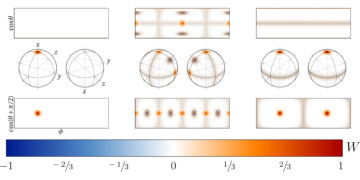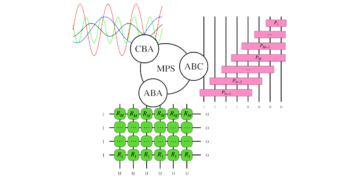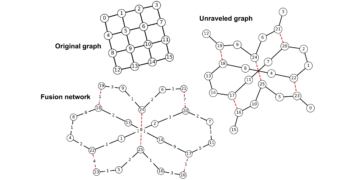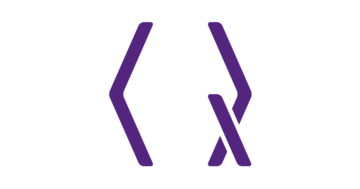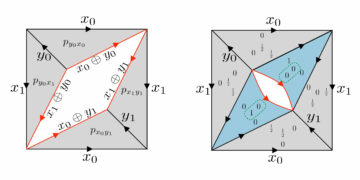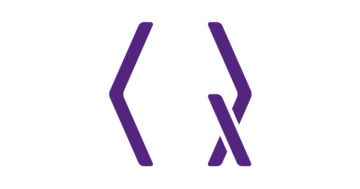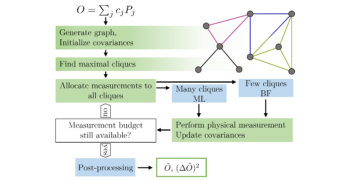1Institute of Physics, École Polytechnique Fédérale de Lausanne (EPFL), CH-1015 Lausanne, Switzerland
2Center for Quantum Science and Engineering, École Polytechnique Fédérale de Lausanne (EPFL), CH-1015 Lausanne, Switzerland
3Zhili College, Tsinghua University, Beijing 100084, China
4CPHT, CNRS, École polytechnique, Institut Polytechnique de Paris, 91120 Palaiseau, France
5Collège de France, Université PSL, 11 place Marcelin Berthelot, 75005 Paris, France
Find this paper interesting or want to discuss? Scite or leave a comment on SciRate.
Abstract
Quantum state reconstruction using Neural Quantum States has been proposed as a viable tool to reduce quantum shot complexity in practical applications, and its advantage over competing techniques has been shown in numerical experiments focusing mainly on the noiseless case. In this work, we numerically investigate the performance of different quantum state reconstruction techniques for mixed states: the finite-temperature Ising model. We show how to systematically reduce the quantum resource requirement of the algorithms by applying variance reduction techniques. Then, we compare the two leading neural quantum state encodings of the state, namely, the Neural Density Operator and the positive operator-valued measurement representation, and illustrate their different performance as the mixedness of the target state varies. We find that certain encodings are more efficient in different regimes of mixedness and point out the need for designing more efficient encodings in terms of both classical and quantum resources.

Featured image: Sample complexity dependence on the reconstruction error with different temperature and NQS ansatze.
Popular summary
► BibTeX data
► References
[1] Michael A Nielsen and Isaac L Chuang. “Quantum computation and quantum information”. Cambridge University Press. (2010).
https://doi.org/10.1017/CBO9780511976667
[2] Iulia M Georgescu, Sahel Ashhab, and Franco Nori. “Quantum simulation”. Reviews of Modern Physics 86, 153 (2014).
https://doi.org/10.1103/RevModPhys.86.153
[3] Nicolas Gisin and Rob Thew. “Quantum communication”. Nature Photonics 1, 165–171 (2007).
https://doi.org/10.1038/nphoton.2007.22
[4] Nicolas Gisin, Grégoire Ribordy, Wolfgang Tittel, and Hugo Zbinden. “Quantum cryptography”. Reviews of Modern Physics 74, 145 (2002).
https://doi.org/10.1103/revmodphys.74.145
[5] Jacob Biamonte, Peter Wittek, Nicola Pancotti, Patrick Rebentrost, Nathan Wiebe, and Seth Lloyd. “Quantum machine learning”. Nature 549, 195–202 (2017).
https://doi.org/10.1038/nature23474
[6] John Preskill. “Quantum computing in the nisq era and beyond”. Quantum 2, 79 (2018).
https://doi.org/10.22331/q-2018-08-06-79
[7] Zhenyu Cai, Ryan Babbush, Simon C Benjamin, Suguru Endo, William J Huggins, Ying Li, Jarrod R McClean, and Thomas E O’Brien. “Quantum error mitigation”. Reviews of Modern Physics 95, 045005 (2023).
https://doi.org/10.1103/RevModPhys.95.045005
[8] Jarrod R McClean, Jonathan Romero, Ryan Babbush, and Alán Aspuru-Guzik. “The theory of variational hybrid quantum-classical algorithms”. New Journal of Physics 18, 023023 (2016).
https://doi.org/10.1088/1367-2630/18/2/023023
[9] Jose Carrasco, Andreas Elben, Christian Kokail, Barbara Kraus, and Peter Zoller. “Theoretical and experimental perspectives of quantum verification”. PRX Quantum 2, 010102 (2021).
https://doi.org/10.1103/prxquantum.2.010102
[10] Matteo Paris and Jaroslav Rehacek. “Quantum state estimation”. Volume 649. Springer Science & Business Media. (2004).
https://doi.org/10.1007/b98673
[11] Alexander I Lvovsky. “Iterative maximum-likelihood reconstruction in quantum homodyne tomography”. Journal of Optics B: Quantum and Semiclassical Optics 6, S556 (2004).
https://doi.org/10.1088/1464-4266/6/6/014
[12] J Řeháček, Z Hradil, and M Ježek. “Iterative algorithm for reconstruction of entangled states”. Physical Review A 63, 040303 (2001).
https://doi.org/10.1103/physreva.63.040303
[13] Steven T Flammia, David Gross, Yi-Kai Liu, and Jens Eisert. “Quantum tomography via compressed sensing: error bounds, sample complexity and efficient estimators”. New Journal of Physics 14, 095022 (2012).
https://doi.org/10.1088/1367-2630/14/9/095022
[14] Jeongwan Haah, Aram W Harrow, Zhengfeng Ji, Xiaodi Wu, and Nengkun Yu. “Sample-optimal tomography of quantum states”. In Proceedings of the forty-eighth annual ACM symposium on Theory of Computing. Pages 913–925. (2016).
https://doi.org/10.1145/2897518.2897585
[15] Henry Yuen. “An improved sample complexity lower bound for (fidelity) quantum state tomography”. Quantum 7, 890 (2023).
https://doi.org/10.22331/q-2023-01-03-890
[16] Scott Aaronson. “Shadow tomography of quantum states”. In Proceedings of the 50th annual ACM SIGACT symposium on theory of computing. Pages 325–338. (2018).
https://doi.org/10.1145/3188745.3188802
[17] Hsin-Yuan Huang, Richard Kueng, and John Preskill. “Predicting many properties of a quantum system from very few measurements”. Nature Physics 16, 1050–1057 (2020).
https://doi.org/10.1038/s41567-020-0932-7
[18] Charles Hadfield, Sergey Bravyi, Rudy Raymond, and Antonio Mezzacapo. “Measurements of quantum hamiltonians with locally-biased classical shadows”. Communications in Mathematical Physics 391, 951–967 (2022).
https://doi.org/10.1007/s00220-022-04343-8
[19] Andreas Elben, Steven T Flammia, Hsin-Yuan Huang, Richard Kueng, John Preskill, Benoı̂t Vermersch, and Peter Zoller. “The randomized measurement toolbox”. Nature Reviews Physics 5, 9–24 (2023).
https://doi.org/10.1038/s42254-022-00535-2
[20] David Poulin, Angie Qarry, Rolando Somma, and Frank Verstraete. “Quantum simulation of time-dependent hamiltonians and the convenient illusion of hilbert space”. Physical Review Letters 106, 170501 (2011).
https://doi.org/10.1103/physrevlett.106.170501
[21] Fernando GSL Brandão, Wissam Chemissany, Nicholas Hunter-Jones, Richard Kueng, and John Preskill. “Models of quantum complexity growth”. PRX Quantum 2, 030316 (2021).
https://doi.org/10.1103/prxquantum.2.030316
[22] Haimeng Zhao, Laura Lewis, Ishaan Kannan, Yihui Quek, Hsin-Yuan Huang, and Matthias C Caro. “Learning quantum states and unitaries of bounded gate complexity” (2023). arXiv:2310.19882.
arXiv:2310.19882
[23] Tillmann Baumgratz, Alexander Nüßeler, Marcus Cramer, and Martin B Plenio. “A scalable maximum likelihood method for quantum state tomography”. New Journal of Physics 15, 125004 (2013).
https://doi.org/10.1088/1367-2630/15/12/125004
[24] BP Lanyon, C Maier, Milan Holzäpfel, Tillmann Baumgratz, C Hempel, P Jurcevic, Ish Dhand, AS Buyskikh, AJ Daley, Marcus Cramer, et al. “Efficient tomography of a quantum many-body system”. Nature Physics 13, 1158–1162 (2017).
https://doi.org/10.1038/nphys4244
[25] Yuchen Guo and Shuo Yang. “Scalable quantum state tomography with locally purified density operators and local measurements” (2024). arXiv:2307.16381.
arXiv:2307.16381
[26] Giuseppe Carleo and Matthias Troyer. “Solving the quantum many-body problem with artificial neural networks”. Science 355, 602–606 (2017).
https://doi.org/10.1126/science.aag2302
[27] Giacomo Torlai, Guglielmo Mazzola, Juan Carrasquilla, Matthias Troyer, Roger Melko, and Giuseppe Carleo. “Neural-network quantum state tomography”. Nature Physics 14, 447–450 (2018).
https://doi.org/10.1038/s41567-018-0048-5
[28] Juan Carrasquilla, Giacomo Torlai, Roger G Melko, and Leandro Aolita. “Reconstructing quantum states with generative models”. Nature Machine Intelligence 1, 155–161 (2019).
https://doi.org/10.1038/s42256-019-0028-1
[29] Sanjaya Lohani, Thomas A Searles, Brian T Kirby, and Ryan T Glasser. “On the experimental feasibility of quantum state reconstruction via machine learning”. IEEE Transactions on Quantum Engineering 2, 1–10 (2021).
https://doi.org/10.1109/tqe.2021.3106958
[30] Tobias Schmale, Moritz Reh, and Martin Gärttner. “Efficient quantum state tomography with convolutional neural networks”. npj Quantum Information 8, 115 (2022).
https://doi.org/10.1038/s41534-022-00621-4
[31] Peter Cha, Paul Ginsparg, Felix Wu, Juan Carrasquilla, Peter L McMahon, and Eun-Ah Kim. “Attention-based quantum tomography”. Machine Learning: Science and Technology 3, 01LT01 (2021).
https://doi.org/10.1088/2632-2153/ac362b
[32] Giacomo Torlai and Roger G Melko. “Latent space purification via neural density operators”. Physical Review Letters 120, 240503 (2018).
https://doi.org/10.1103/physrevlett.120.240503
[33] Ian Goodfellow, Yoshua Bengio, and Aaron Courville. “Deep learning”. MIT Press. (2016). url: http://www.deeplearningbook.org.
http://www.deeplearningbook.org
[34] Giacomo Torlai, Guglielmo Mazzola, Giuseppe Carleo, and Antonio Mezzacapo. “Precise measurement of quantum observables with neural-network estimators”. Physical Review Research 2, 022060 (2020).
https://doi.org/10.1103/physrevresearch.2.022060
[35] Abhijeet Melkani, Clemens Gneiting, and Franco Nori. “Eigenstate extraction with neural-network tomography”. Physical Review A 102, 022412 (2020).
https://doi.org/10.1103/PhysRevA.102.022412
[36] Filippo Vicentini, Riccardo Rossi, and Giuseppe Carleo. “Positive-definite parametrization of mixed quantum states with deep neural networks” (2022). arXiv:2206.13488.
arXiv:2206.13488
[37] Marcel Neugebauer, Laurin Fischer, Alexander Jäger, Stefanie Czischek, Selim Jochim, Matthias Weidemüller, and Martin Gärttner. “Neural-network quantum state tomography in a two-qubit experiment”. Physical Review A 102, 042604 (2020).
https://doi.org/10.1103/PhysRevA.102.042604
[38] Dan Sehayek, Anna Golubeva, Michael S Albergo, Bohdan Kulchytskyy, Giacomo Torlai, and Roger G Melko. “Learnability scaling of quantum states: Restricted boltzmann machines”. Physical Review B 100, 195125 (2019).
https://doi.org/10.1103/physrevb.100.195125
[39] Abhinav Kandala, Antonio Mezzacapo, Kristan Temme, Maika Takita, Markus Brink, Jerry M Chow, and Jay M Gambetta. “Hardware-efficient variational quantum eigensolver for small molecules and quantum magnets”. Nature 549, 242–246 (2017).
https://doi.org/10.1038/nature23879
[40] Joseph M Lukens, Kody JH Law, and Ryan S Bennink. “A bayesian analysis of classical shadows”. npj Quantum Information 7, 113 (2021).
https://doi.org/10.1038/s41534-021-00447-6
[41] Dmitri Iouchtchenko, Jérôme F Gonthier, Alejandro Perdomo-Ortiz, and Roger G Melko. “Neural network enhanced measurement efficiency for molecular groundstates”. Machine Learning: Science and Technology 4, 015016 (2023).
https://doi.org/10.1088/2632-2153/acb4df
[42] Juan Carrasquilla, Di Luo, Felipe Pérez, Ashley Milsted, Bryan K Clark, Maksims Volkovs, and Leandro Aolita. “Probabilistic simulation of quantum circuits using a deep-learning architecture”. Physical Review A 104, 032610 (2021).
https://doi.org/10.1103/physreva.104.032610
[43] Federico Becca and Sandro Sorella. “Quantum monte carlo approaches for correlated systems”. Cambridge University Press. (2017).
https://doi.org/10.1017/9781316417041
[44] Alessandro Sinibaldi, Clemens Giuliani, Giuseppe Carleo, and Filippo Vicentini. “Unbiasing time-dependent variational monte carlo by projected quantum evolution”. Quantum 7, 1131 (2023).
https://doi.org/10.22331/q-2023-10-10-1131
[45] Phelim P Boyle. “Options: A monte carlo approach”. Journal of Financial Economics 4, 323–338 (1977).
https://doi.org/10.1016/0304-405X(77)90005-8
[46] Dian Wu, Lei Wang, and Pan Zhang. “Solving Statistical Mechanics Using Variational Autoregressive Networks”. Physical Review Letters 122, 080602 (2019).
https://doi.org/10.1103/PhysRevLett.122.080602
[47] Or Sharir, Yoav Levine, Noam Wies, Giuseppe Carleo, and Amnon Shashua. “Deep Autoregressive Models for the Efficient Variational Simulation of Many-Body Quantum Systems”. Physical Review Letters 124, 020503 (2020).
https://doi.org/10.1103/PhysRevLett.124.020503
[48] Mohamed Hibat-Allah, Martin Ganahl, Lauren E Hayward, Roger G Melko, and Juan Carrasquilla. “Recurrent neural network wave functions”. Physical Review Research 2, 023358 (2020).
https://doi.org/10.1103/physrevresearch.2.023358
[49] Rie Johnson and Tong Zhang. “Accelerating stochastic gradient descent using predictive variance reduction”. Advances in Neural Information Processing Systems 26 (2013). url: https://proceedings.neurips.cc/paper_files/paper/2013/file/ac1dd209cbcc5e5d1c6e28598e8cbbe8-Paper.pdf.
https://proceedings.neurips.cc/paper_files/paper/2013/file/ac1dd209cbcc5e5d1c6e28598e8cbbe8-Paper.pdf
[50] Shakir Mohamed, Mihaela Rosca, Michael Figurnov, and Andriy Mnih. “Monte carlo gradient estimation in machine learning”. Journal of Machine Learning Research 21, 1–62 (2020). url: http://jmlr.org/papers/v21/19-346.html.
http://jmlr.org/papers/v21/19-346.html
[51] Giuseppe Carleo, Kenny Choo, Damian Hofmann, James E. T. Smith, Tom Westerhout, Fabien Alet, Emily J. Davis, Stavros Efthymiou, Ivan Glasser, Sheng-Hsuan Lin, Marta Mauri, Guglielmo Mazzola, Christian B. Mendl, Evert van Nieuwenburg, Ossian O’Reilly, Hugo Théveniaut, Giacomo Torlai, Filippo Vicentini, and Alexander Wietek. “Netket: A machine learning toolkit for many-body quantum systems”. SoftwareXPage 100311 (2019).
https://doi.org/10.1016/j.softx.2019.100311
[52] Filippo Vicentini, Damian Hofmann, Attila Szabó, Dian Wu, Christopher Roth, Clemens Giuliani, Gabriel Pescia, Jannes Nys, Vladimir Vargas-Calderón, Nikita Astrakhantsev, and Giuseppe Carleo. “NetKet 3: Machine Learning Toolbox for Many-Body Quantum Systems”. SciPost Physics CodebasesPage 7 (2022).
https://doi.org/10.21468/SciPostPhysCodeb.7
[53] Dion Häfner and Filippo Vicentini. “mpi4jax: Zero-copy mpi communication of jax arrays”. Journal of Open Source Software 6, 3419 (2021).
https://doi.org/10.21105/joss.03419
[54] Frank Arute, Kunal Arya, Ryan Babbush, Dave Bacon, Joseph C Bardin, Rami Barends, Rupak Biswas, Sergio Boixo, Fernando GSL Brandao, David A Buell, et al. “Quantum supremacy using a programmable superconducting processor”. Nature 574, 505–510 (2019).
https://doi.org/10.1038/s41586-019-1666-5
[55] Manuel Endres, Hannes Bernien, Alexander Keesling, Harry Levine, Eric R Anschuetz, Alexandre Krajenbrink, Crystal Senko, Vladan Vuletic, Markus Greiner, and Mikhail D Lukin. “Atom-by-atom assembly of defect-free one-dimensional cold atom arrays”. Science 354, 1024–1027 (2016).
https://doi.org/10.1126/science.aah3752
[56] Clément L Canonne. “A short note on learning discrete distributions” (2020). arXiv:2002.11457.
arXiv:2002.11457
[57] Filippo Vicentini, Alberto Biella, Nicolas Regnault, and Cristiano Ciuti. “Variational neural-network ansatz for steady states in open quantum systems”. Physical Review Letters 122, 250503 (2019).
https://doi.org/10.1103/physrevlett.122.250503
[58] Diederik P Kingma and Jimmy Ba. “Adam: A method for stochastic optimization”. In International Conference on Learning Representations. San Diega, CA, USA (2015). arXiv:1412.6980.
arXiv:1412.6980
[59] James Bradbury, Roy Frostig, Peter Hawkins, Matthew James Johnson, Chris Leary, Dougal Maclaurin, George Necula, Adam Paszke, Jake VanderPlas, Skye Wanderman-Milne, and Qiao Zhang. “JAX: composable transformations of Python+NumPy programs” (2018). http://github.com/google/jax.
http://github.com/google/jax
[60] Thomas M Cover and Joy A. Thomas. “Elements of information theory”. John Wiley & Sons. (1999).
https://doi.org/10.1002/047174882x
[61] Haimeng Zhao. “Non-iid quantum federated learning with one-shot communication complexity”. Quantum Machine Intelligence 5, 3 (2023).
https://doi.org/10.1007/s42484-022-00091-z
[62] Junyi Liu, Yifu Tang, Haimeng Zhao, Xieheng Wang, Fangyu Li, and Jingyi Zhang. “Cps attack detection under limited local information in cyber security: An ensemble multi-node multi-class classification approach”. ACM Transactions on Sensor Networks 20, 1–27 (2024).
https://doi.org/10.1145/3585520
Cited by
[1] Hannah Lange, Anka Van de Walle, Atiye Abedinnia, and Annabelle Bohrdt, “From Architectures to Applications: A Review of Neural Quantum States”, arXiv:2402.09402, (2024).
[2] Hsin-Yuan Huang, John Preskill, and Mehdi Soleimanifar, “Certifying almost all quantum states with few single-qubit measurements”, arXiv:2404.07281, (2024).
[3] Adriano Macarone Palmieri, Guillem Müller-Rigat, Anubhav Kumar Srivastava, Maciej Lewenstein, Grzegorz Rajchel-Mieldzioć, and Marcin Płodzień, “Enhancing quantum state tomography via resource-efficient attention-based neural networks”, arXiv:2309.10616, (2023).
[4] Johannes Mellak, Enrico Arrigoni, and Wolfgang von der Linden, “Deep Neural Networks as Variational Solutions for Correlated Open Quantum Systems”, arXiv:2401.14179, (2024).
[5] Adriano Macarone-Palmieri, Leonardo Zambrano, Maciej Lewenstein, Antonio Acin, and Donato Farina, “Deep Neural Network-assisted improvement of quantum compressed sensing tomography”, arXiv:2405.10052, (2024).
The above citations are from SAO/NASA ADS (last updated successfully 2024-05-23 14:41:51). The list may be incomplete as not all publishers provide suitable and complete citation data.
Could not fetch Crossref cited-by data during last attempt 2024-05-23 14:41:50: Could not fetch cited-by data for 10.22331/q-2024-05-23-1358 from Crossref. This is normal if the DOI was registered recently.
This Paper is published in Quantum under the Creative Commons Attribution 4.0 International (CC BY 4.0) license. Copyright remains with the original copyright holders such as the authors or their institutions.
- SEO Powered Content & PR Distribution. Get Amplified Today.
- PlatoData.Network Vertical Generative Ai. Empower Yourself. Access Here.
- PlatoAiStream. Web3 Intelligence. Knowledge Amplified. Access Here.
- PlatoESG. Carbon, CleanTech, Energy, Environment, Solar, Waste Management. Access Here.
- PlatoHealth. Biotech and Clinical Trials Intelligence. Access Here.
- Source: https://quantum-journal.org/papers/q-2024-05-23-1358/
- :has
- :is
- :not
- ][p
- 1
- 10
- 100
- 102
- 11
- 12
- 120
- 13
- 14
- 145
- 15%
- 16
- 17
- 19
- 1999
- 2%
- 20
- 2001
- 2007
- 2010
- 2011
- 2012
- 2013
- 2014
- 2015
- 2016
- 2017
- 2018
- 2019
- 2020
- 2021
- 2022
- 2023
- 2024
- 21
- 22
- 23
- 24
- 25
- 26
- 27
- 28
- 29
- 30
- 31
- 32
- 33
- 34
- 35%
- 36
- 37
- 39
- 4
- 40
- 41
- 42
- 45
- 46
- 48
- 49
- 5
- 50
- 51
- 52
- 53
- 54
- 55
- 58
- 6
- 60
- 62
- 7
- 74
- 77
- 8
- 9
- a
- Aaron
- above
- ABSTRACT
- access
- ACM
- Adam
- advances
- ADvantage
- affiliations
- AL
- alejandro
- Alexander
- algorithm
- algorithms
- All
- almost
- also
- an
- analysis
- and
- anna
- annual
- applications
- Applying
- approach
- approaches
- architecture
- architectures
- ARE
- artificial
- artificial neural networks
- arya
- AS
- Assembly
- atom
- attack
- attempt
- author
- authors
- b
- based
- Bayesian
- BE
- been
- Beijing
- Benjamin
- Beyond
- both
- bound
- bounded
- bounds
- BP
- Break
- Brian
- brink
- Bryan
- business
- but
- by
- CA
- cambridge
- CAN
- case
- certain
- cha
- characterize
- Charles
- Choo
- chow
- Chris
- christian
- Christopher
- circuits
- classes
- classification
- cold
- collected
- College
- comment
- Commons
- Communication
- Communications
- compare
- competing
- complete
- complexity
- composable
- computation
- computing
- Conference
- Convenient
- copyright
- correlated
- could
- cover
- cryptography
- Crystal
- cyber
- cyber security
- dan
- data
- Dave
- David
- Davis
- de
- deep
- deep neural networks
- Den
- density
- dependence
- depends
- Design
- designing
- Detection
- different
- discrete
- discuss
- distributions
- donato
- during
- e
- E&T
- Economics
- efficiency
- efficient
- Engineering
- enhanced
- enhancing
- Era
- eric
- error
- Ether (ETH)
- evolution
- experiment
- experimental
- experiments
- extraction
- feasibility
- federated
- Federico
- few
- fidelity
- financial
- Find
- focusing
- For
- found
- France
- frank
- from
- functions
- gate
- generative
- George
- giuseppe
- gross
- Growth
- harvard
- henry
- High
- holders
- How
- How To
- HTML
- http
- HTTPS
- huang
- hugo
- Hybrid
- hybrid quantum-classical
- i
- IEEE
- if
- Illusion
- illustrate
- image
- improved
- improvement
- in
- information
- institutions
- Intelligence
- interest
- interesting
- International
- investigate
- investigation
- IT
- ITS
- ivan
- jacob
- james
- JavaScript
- jimmy
- John
- Johnson
- jonathan
- journal
- joy
- juan
- Kim
- kirby
- kumar
- Last
- lauren
- Law
- leading
- learning
- Leave
- lei
- levine
- Lewis
- li
- License
- light
- likelihood
- Limited
- lin
- List
- local
- locally
- lower
- machine
- machine learning
- Machines
- Magnets
- Maier
- mainly
- manuel
- many
- Marcus
- Martin
- mathematical
- matthew
- matthias
- max-width
- maximum
- May..
- mcclean
- measurement
- measurements
- mechanics
- Media
- method
- Metrology
- Michael
- mikhail
- MILAN
- MIT
- mitigation
- mixed
- model
- models
- Modern
- Mohamed
- molecular
- Month
- more
- more efficient
- namely
- nathan
- Nature
- Need
- network
- networks
- Neural
- neural network
- neural networks
- NeurIPS
- New
- nicholas
- Nicolas
- normal
- note
- numerical
- of
- on
- only
- open
- open source
- operator
- operators
- optics
- optimization
- or
- original
- our
- out
- over
- pages
- PAN
- Paper
- parametrization
- paris
- patrick
- Paul
- paves
- perform
- performance
- perspectives
- Peter
- physical
- Physics
- Place
- plato
- Plato Data Intelligence
- PlatoData
- Point
- positive
- Practical
- Practical Applications
- predictive
- press
- Problem
- Proceedings
- processing
- Processor
- programmable
- Programs
- projected
- properties
- propose
- proposed
- provide
- PSL
- published
- publisher
- publishers
- Quantum
- quantum information
- quantum systems
- R
- RAMI
- Randomized
- recently
- reduce
- reduction
- references
- regimes
- registered
- remains
- representation
- representations
- requirement
- research
- resource
- Resources
- restricted
- review
- Reviews
- Richard
- rob
- roy
- Ryan
- s
- sample
- San
- scalable
- scaling
- Science
- Science and Technology
- scott
- scott aaronson
- security
- shed
- Short
- shot
- show
- shown
- Simon
- simulation
- simulations
- skye
- small
- smith
- Software
- Solutions
- some
- Source
- Space
- State
- States
- statistical
- steady
- steven
- Successfully
- such
- suitable
- Symposium
- system
- systematically
- Systems
- T
- tang
- Target
- technique
- techniques
- Technology
- terms
- that
- The
- The State
- their
- then
- theory
- These
- this
- thomas
- Through
- Title
- to
- tom
- tomography
- tool
- Toolbox
- toolkit
- towards
- Transactions
- transformations
- Tsinghua
- two
- under
- university
- updated
- URL
- USA
- using
- van
- Verification
- very
- via
- viable
- volume
- von
- W
- wang
- want
- was
- Wave
- Way..
- we
- which
- wide
- william
- with
- Work
- wu
- year
- YING
- zephyrnet
- zhang
- Zhao

